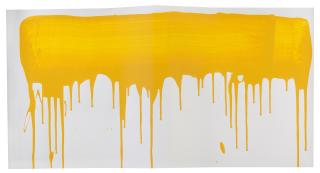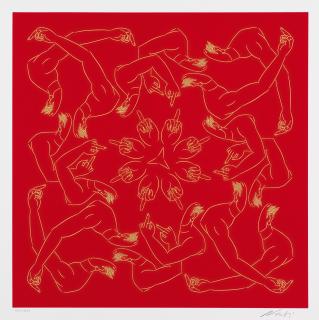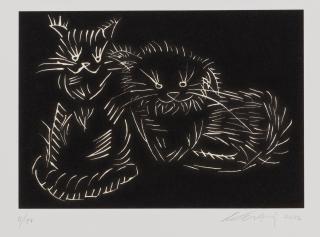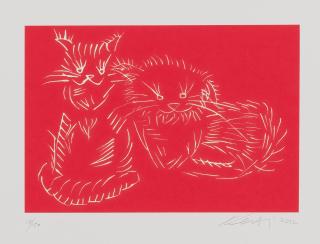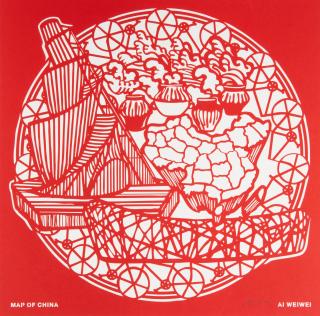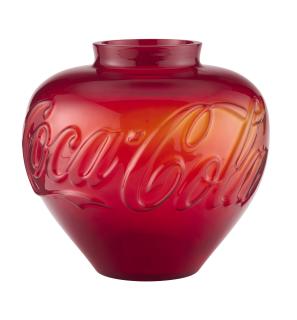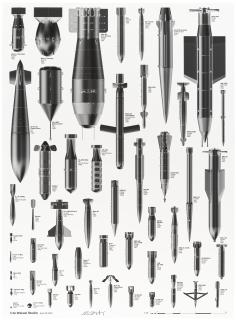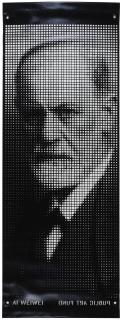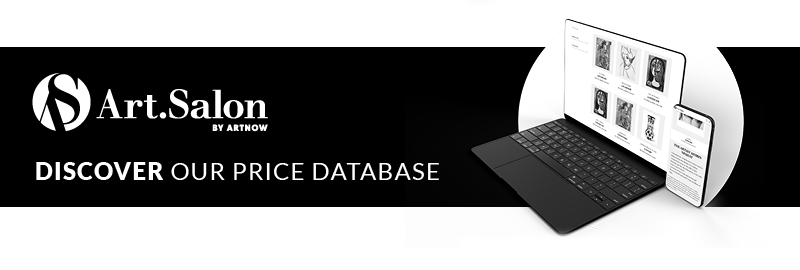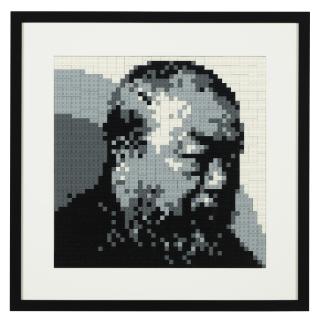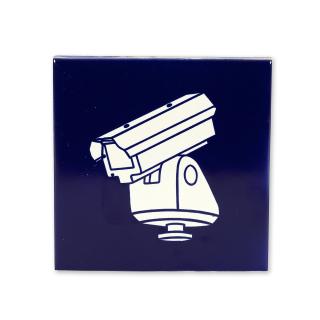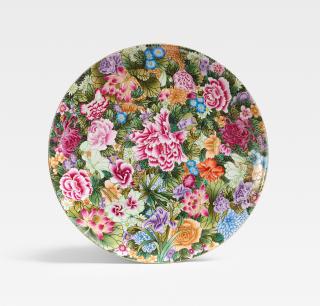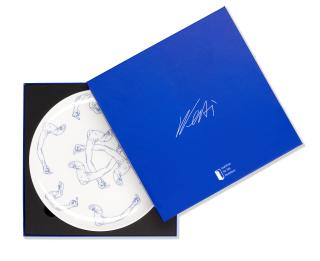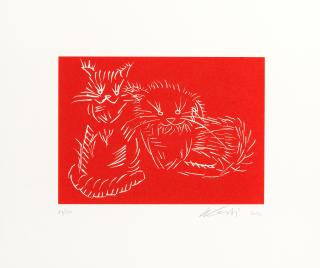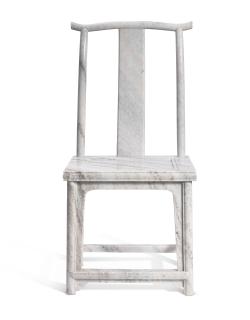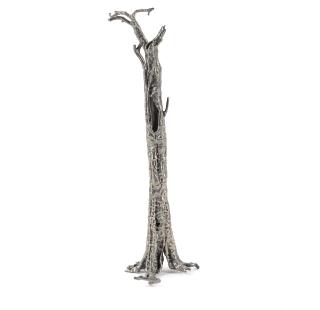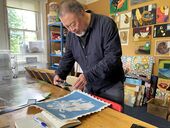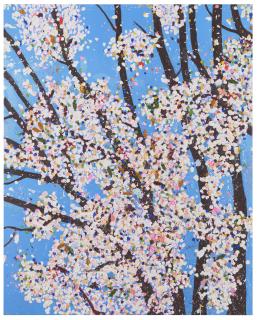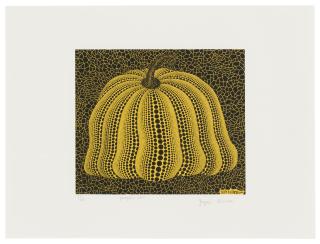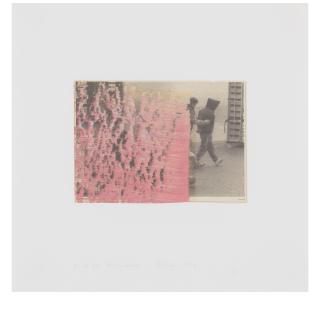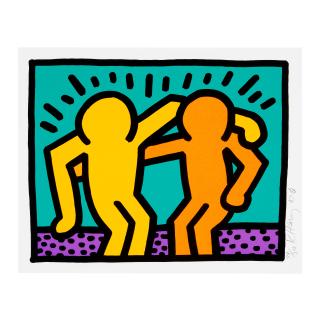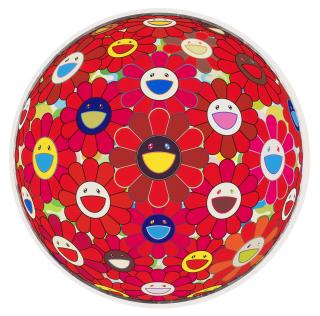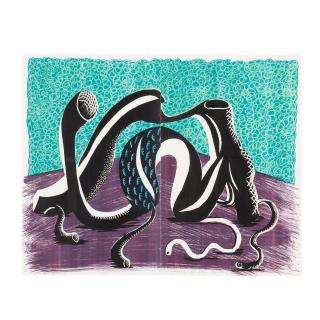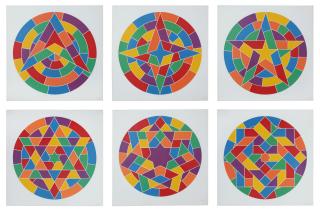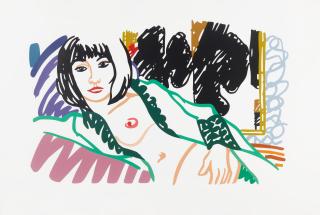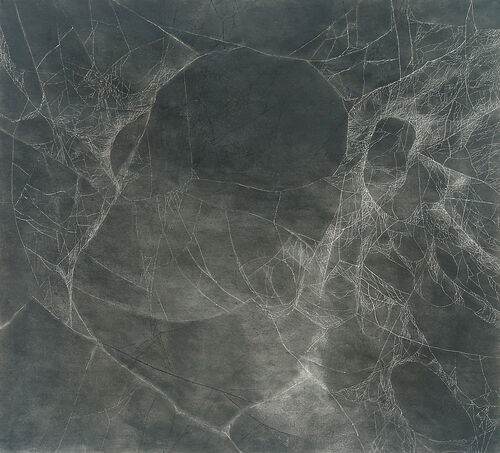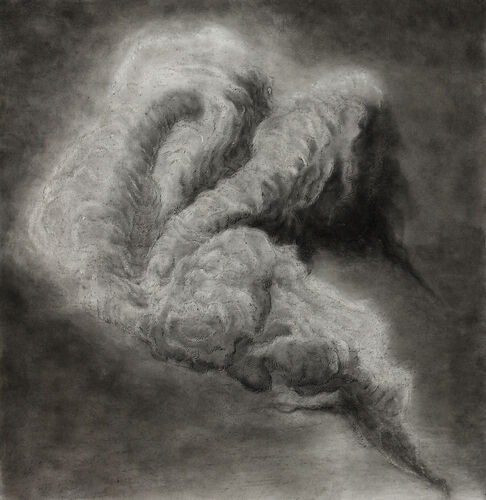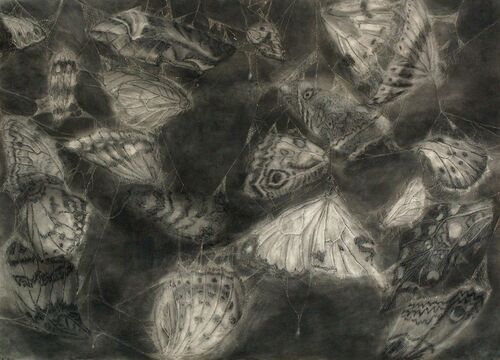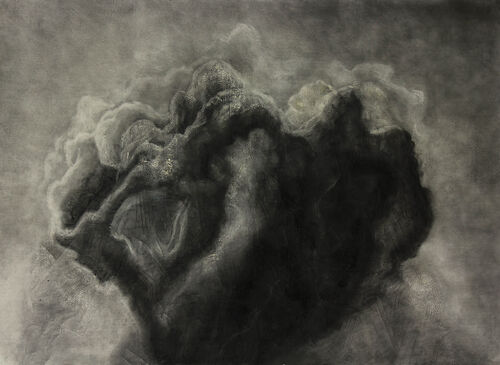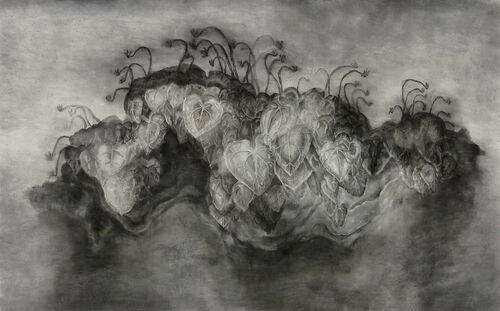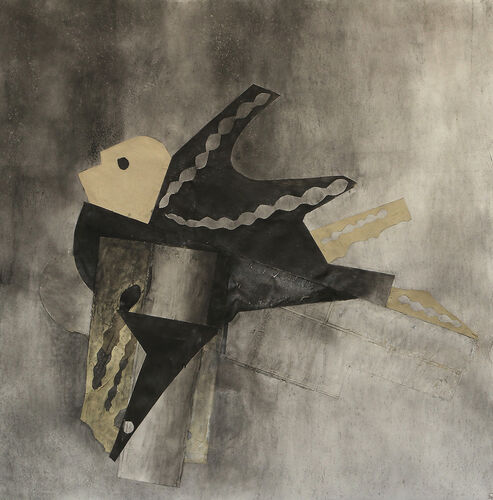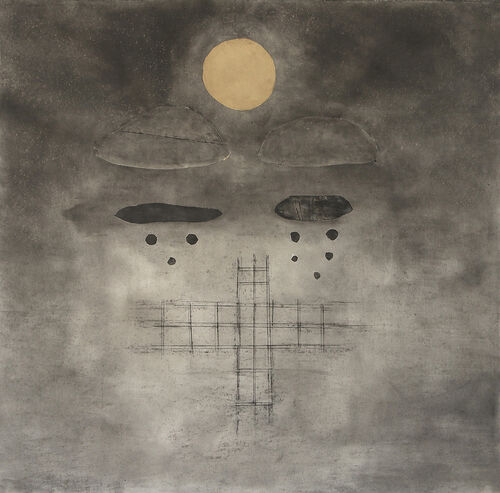Ai Weiwei born 1957 in Beijing, China
The artist Ai Weiwei
- World-renowned contemporary Chinese conceptual artist, sculptor and curator.
- His large-scale public artworks are among his best-known works.
- Was imprisoned in China for 81 days in 2011 for statements critical of the government.
Ai Weiwei is a Chinese conceptual artist, sculptor and curator who is one of the best-known artists in the world. He is also a film director, author and curator. His work is characterised by a provocative combination of traditional symbols and Chinese history. In his works, he denounces human rights violations, economic exploitation and environmental pollution in China, and engages in cultural criticism as well as criticism of the global distribution of power. Due to statements critical of the government, he was imprisoned in China from April to June 2011 and punished with a subsequent travel ban, which was imposed until 2015.
In Weiwei's art, a formal reference to Marcel Duchamp can often be discerned. He frequently uses objects for his installations, which he then places in a new context. In addition, he deals with various art forms and has produced sculptures, paintings, photographs, films and books, among other things. He also enjoys taking part in performances. Among his best-known works are his large-scale public pieces.
For example, he laid out an exhibition hall at the Tate Modern (London) with 100 million sunflower seeds from May 2010 to October 2021. The seeds in the Sunflower Seeds installation were made of porcelain and hand-painted.
Born on 28.08.1957 in Beijing (China), Weiwei went to the Beijing Film Academy in 1978. There he founded the artist group Stars Group, which experimented with traditional art forms and opposed the state-controlled culture industry. In 1981, Weiwei moved to the USA, where he lived mostly in New York and attended the Parsons School of Design. At this time, he also studied performance and conceptual art, Dadaism and Pop Art in depth. In 1993, he went back to China, became increasingly politically active and founded an experimental art gallery in Beijing called China Art Archives and Warehouse in 1994. From 2015 to 2019, he lived and worked in Berlin, then moved to Cambridge and has been living in the small Portuguese town of Montemor-o-Novo since spring 2021.
Der Künstler Ai Weiwei
- Weltbekannter zeitgenössischer chinesischer Konzeptkünstler, Bildhauer und Kurator.
- Seine großformatigen öffentlichen Kunstwerke zählen zu seinen bekanntesten Arbeiten.
- War 2011 wegen regierungskritischen Äußerungen 81 Tage in China inhaftiert.
Ai Weiwei ist ein chinesischer Konzeptkünstler, Bildhauer und Kurator, der zu den bekanntesten Künstlern der Welt gehört. Er ist zudem als Filmregisseur, Autor und Kurator tätig. Seine Arbeit zeichnet sich durch eine provokative Kombination aus traditionellen Symbolen und chinesischer Geschichte aus. In seinen Werken prangert er Menschenrechtsverstöße, wirtschaftliche Ausbeutung und Umweltverschmutzung in China an, übt Kulturkritik sowie Kritik an der globalen Machtverteilung. Aufgrund von regierungskritischen Äußerungen wurde er von April bis Juni 2011 in China inhaftiert und mit einem anschließenden Reiseverbot bestraft, das bis 2015 verhängt wurde.
In Weiweis Kunst lässt sich häufig ein formaler Bezug zu Marcel Duchamp erkennen. Oftmals verwendet er für seine Installationen Objekte, die er dann in einen neuen Zusammenhang stellt. Daneben befasst er sich mit verschiedenen Kunstformen und brachte neben Installationen u. a. auch Skulpturen, Bilder, Fotografien, Filme und Bücher hervor. Außerdem nimmt er gern an Performances teil. Zu seinen bekanntesten Werken zählen seine großformatigen öffentlichen Stücke.
So legte er von Mai 2010 bis Oktober 2021 eine Ausstellungshalle in der Tate Modern (London) mit 100 Millionen Sonnenblumenkernen aus. Die Kerne der Installation Sunflower Seeds waren aus Porzellan und handbemalt.
Am 28.08.1957 in Peking (China) geboren, ging Weiwei 1978 an die Pekinger Filmakademie. Dort gründete er die Künstlergruppe Stars Group, die mit traditionellen Kunstformen experimentierte und sich gegen den staatlich kontrollierten Kulturbetrieb opponierte. 1981 zog Weiwei in die USA, lebte dort größtenteils in New York und besuchte die Parsons School of Design. Zudem befasste er sich zu dieser Zeit eingehend mit Performance- und Konzeptkunst, dem Dadaismus und der Pop-Art. 1993 ging er zurück nach China, wurde zunehmend politisch aktiv und gründete 1994 eine Galerie für experimentelle Kunst in Peking mit dem Namen China Art Archives and Warehouse. In den Jahren 2015 bis 2019 lebte und arbeitete er in Berlin, zog dann nach Cambridge und lebt seit dem Frühjahr 2021 in der portugiesischen Kleinstadt Montemor-o-Novo.
Ai Weiwei in a nutshell
Born in 1957, the artist grew up in labor camps, including in Manchuria. His father, the poet and painter Ai Qing (1910-1996), had been sentenced to 20 years of exile as a regime critic. In 1978, Ai was allowed to study at the Beijing Film Academy, and in the early 1980s he lived for two years in New York, where he explored performance, conceptual art, and Pop Art.
The artist attracted attention in 2014 when he made portraits with Lego bricks on the grounds of the former Alcatraz prison near San Francisco. He paid tribute in this way to a total of 175 dissidents, including Edward Snowden and Nelson Mandela.
His largest Lego project to date, 15 meters wide, is a replica of Claude Monet's water lily painting. With bricks reminiscent of pixels, Ai updates the famous painting for the 21st century, which is shaped by digital technologies and ideas of beauty. In total, Ai used 650,000 stones in this work.
In 2015, Ai ordered bricks for a project from the Lego company, but did not receive them. Lego did not want to participate in political art. Ai was still able to realize his project: People around the world donated their Lego bricks to him.
The Tate Modern in London commissioned Ai Weiwei to create this installation, which consists of 100 million hand-painted porcelain sunflower seeds. In China, sunflower seeds were a staple food for the poor until the 20th century; today they are popular snacks and a symbol of empathy and friendship. For two years, about 1600 people in Jingdezhen, a city with a long tradition of porcelain production, painted the small seeds. The installation was on display at Turbine Hall in London from October 2010 to May 2011. The porcelain cores were piled up 10cm high on an area of 1000 m². Visitors were allowed to enter the installation, lie down, etc. Ai wanted to achieve irritation with the real-looking porcelain cores, to break the silence of the museum with the crunching when walking. Not the work itself, but its meditative effect had been the goal of the installation.
Ai was all-encompassing in his criticism of the Chinese political system and lack of freedom. »The government, the whole system, is sacrificing education, environmental resources and the interests of most people just so that a few people connected to the government can become extremely rich,« he declared in November 2010. As a result, Ai was no longer allowed to leave China. In April 2011, he was arrested and convicted for alleged tax evasion. In June, he was released on bail after 81 days. In the following period, Ai was not allowed to leave Beijing or speak to journalists for a year. However, he did not get his passport back until 2015, which ended his travel ban.
Ai left his native China in 2015, a few months after he was allowed to travel again. He accepted a visiting professorship in Berlin, where he lived for four years. Then he moved to Cambridge, but he didn't like the academic environment there. Since 2021 he has been living in Portugal, in the small town of Montemor-o-Novo (as of June 2023).
Häufige Fragen zu Ai Weiwei
Der 1957 geborene Künstler wuchs in Arbeitslagern, unter anderem in der Mandschurei, auf. Sein Vater, der Dichter und Maler Ai Qing (1910-1996), war als Regimekritiker zu 20 Jahren Verbannung verurteilt worden. Im Jahr 1978 durfte Ai an der Pekinger Filmakademie studieren, Anfang der 1980er lebte er zwei Jahre in New York, wo er sich mit Performance, Konzeptkunst und Pop Art befasste.
Aufmerksamkeit erregte der Künstler im Jahr 2014, als er auf dem Gelände des ehemaligen Gefängnisses Alcatraz bei San Francisco Portraits mit Legosteinen anfertigte. Insgesamt 175 Dissidenten, unter anderem Edward Snowden und Nelson Mandela, würdigte er auf diese Weise.
Sein bisher größtes Lego-Projekt mit 15 Metern Breite ist eine Nachbildung von Claude Monets Seerosen-Gemälde. Mit den an Pixeln erinnernden Steinen aktualisiert Ai das berühmte Gemälde fürs 21. Jahrhundert, das von digitalen Technologien und Schönheitsvorstellungen geprägt ist. Insgesamt verbaute Ai 650.000 Steine in diesem Werk.
Im Jahr 2015 bestellte Ai bei der Firma Lego Steine für ein Projekt, bekam sie jedoch nicht. Lego wollte sich nicht an politischer Kunst beteiligen. Ai konnte sein Vorhaben dennoch realisieren: Weltweit spendeten Menschen ihre Legosteine für ihn.
Die Tate Modern in London beauftrage Ai Weiwei mit dieser Installation, die aus 100 Millionen handbemalten Sonnenblumenkernen aus Porzellan besteht. In China waren Sonnenblumenkerne bis ins 20. Jahrhundert Grundnahrungsmittel der armen Bevölkerung, heute sind sie beliebte Snacks und ein Symbol für Empathie und Freundschaft. Zwei Jahre lang bemalten etwa 1600 Menschen in Jingdezhen, einer Stadt mit traditionsreicher Porzellanherstellung, die kleinen Kerne. Die Installation war von Oktober 2010 bis Mai 2011 in der Turbine Hall in London zu sehen. Auf einer Fläche von 1000 m² wurden die Porzellankerne 10cm hoch aufgeschüttet. Besuchende durften die Installation betreten, sich hinlegen usw. Ai wollte mit den echt aussehenden Porzellankernen Irritation erreichen, mit dem Knirschen beim Gehen die Stille des Museums durchbrechen. Nicht das Werk selbst, sondern seine meditative Wirkung seien das Ziel der Installation gewesen.
Ai kritisierte allumfassend das chinesische politische System und fehlende Freiheit. »Die Regierung, das gesamte System, opfert Bildung, Umweltressourcen und die Interessen der meisten Menschen, nur damit einige wenige Menschen mit Verbindung zur Regierung extrem reich werden können«, erklärte er im November 2010. Daraufhin durfte Ai China nicht mehr verlassen. Im April 2011 wurde er wegen angeblicher Steuerhinterziehung verhaftet und verurteilt. Im Juni kam er nach 81 Tagen gegen Kaution frei. In der folgenden Zeit durfte Ai Peking ein Jahr lang nicht verlassen und nicht mit Journalisten sprechen. Seinen Pass bekam er jedoch erst 2015 zurück, womit sein Reiseverbot endete.
Ai verließ seine Heimat China im Jahr 2015, einige Monate, nachdem er wieder reisen durfte. Er nahm eine Gastprofessur in Berlin an, wo er vier Jahre lang lebte. Dann zog er nach Cambridge um, wo ihm jedoch die akademische Umgebung nicht gefiel. Seit 2021 wohnt er in Portugal, in der Kleinstand Montemor-o-Novo (Stand: Juni 2023).
Ai Weiwei quotes
Zitate von Ai Weiwei
Ai Weiwei in News and Exhibitions
Ai Weiwei curates art from the penal system
6,500 works moved artist and human rights activist Ai Weiwei to be a voice for them. The works are by people from the British penal system, all of whom applied for the Koestler Award. For its 60th anniversary, the Chinese conceptual artist is curating the accompanying exhibition with the evocative title Freedom.
Ai Weiwei in News and Exhibitions
Ai Weiwei kuratiert Kunst aus dem Strafvollzug
6.500 Arbeiten bewegten den Künstler und Menschenrechtler Ai Weiwei dazu, ihnen ein Sprachrohr zu sein. Die Werke stammen von Menschen aus dem britischen Strafvollzug, die sich allesamt auf den Koestler Award beworben haben. Zu dessen 60. Jubiläum kuratiert der chinesische Konzeptkünstler die Begleitausstellung mit dem sprechenden Titel Freedom.



